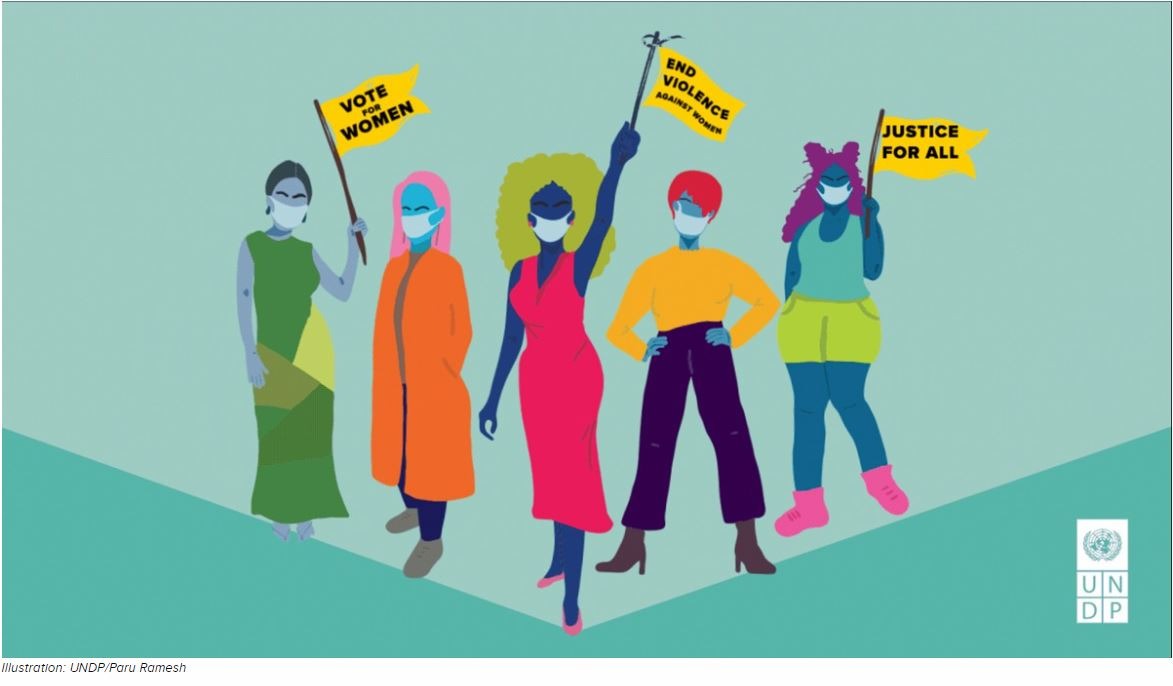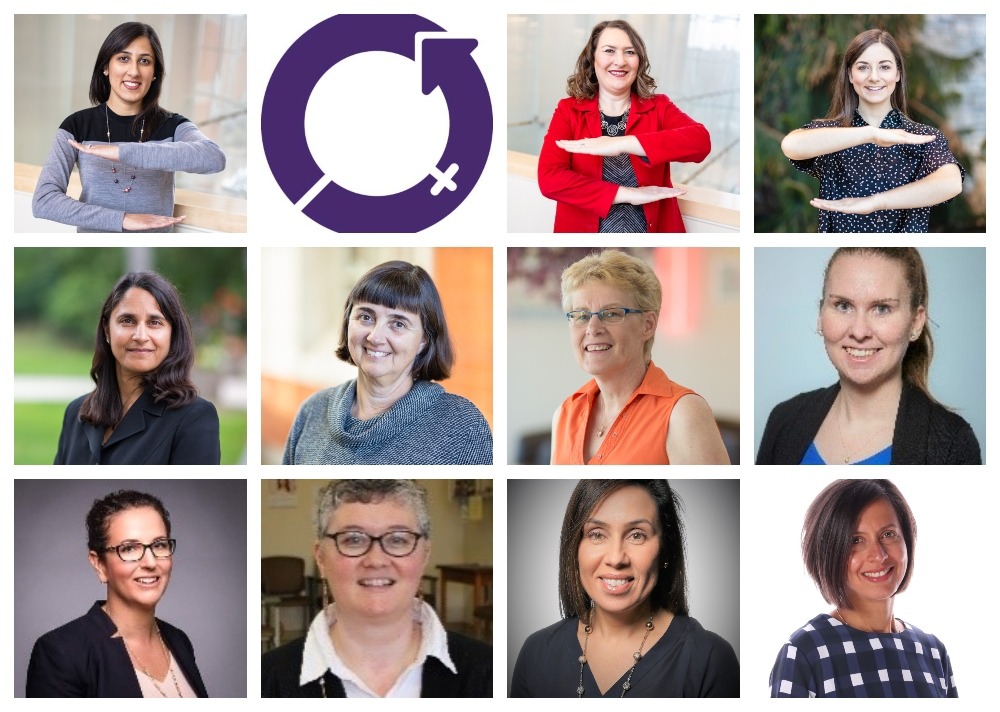
Pandemic causes challenges for women working in healthcare
For the second year in a row, International Women’s Day celebrations are occurring in the midst of a pandemic. The pandemic has placed an inordinate amount of pressure on individuals and has come with its share of challenges and choices. Women, especially, have had to navigate COVID-19 while attempting to maintain their roles both in the workforce and at home.
According to the Women out of Work study, led by the Hamilton Chamber of Commerce, one third of women experienced an increase in work hours and 54% of women in health care in Hamilton were unable to work from home. It’s no surprise that a whopping 83% of respondents reported feeling overwhelmed trying to balance work and caregiving responsibilities.
The health-care industry has been hit particularly hard with a strain on resources and staffing shortages. The pandemic launched Hamilton Health Sciences and its teams into crisis mode. For the last two years, hospitals have been operating under ever-changing circumstances including an increase in safety and screening measures, staffing challenges and a fatigued workforce.
The numbers demonstrate the disproportionate impact the pandemic has had on women, but it is the personal stories that really show what women have been through. Several of our female staff have generously shared their experiences with us.
Working through the pandemic

Dr. Smita Halder
“The first twelve months were very tough,” says Dr. Smita Halder, a gastroenterologist and chair of the Medical Advisory Committee (MAC). “There was so much uncertainty and fear while managing my parenting and worrying about ill and elderly parents in the UK. It felt surreal that we had no rule book for what would happen and things were changing daily.”
Delivery of care across the health-care sector had to adapt as many appointments moved from in-person to virtual options. Teams had to adjust in this uncertain time while managing their own personal fears of the unknown.

Sarah Ruddle
“Like so many other clinics, we needed to make some significant pivots in our care delivery, in a very short time frame,” says Sarah Ruddle, a certified genetic counsellor in the Prenatal Diagnosis Clinic. “As a genetic counsellor, my role is to provide consultation, and up the point of the pandemic, this had always occurred in person. Suddenly we had to find ways to deliver the same consultation but over the phone.”
Ruddle continued to work on site at McMaster University Medical Centre, and worried about exposing her husband and young children to the virus.
Some other members of our workforce transitioned to working from home or working in a hybrid model. This presented its own challenges.

Korinne Hamilton
“For the first few months following the March 2020 declaration of COVID 19 as a pandemic, I worked primarily from home,” says Korinne Hamilton, coordinator of Research Compliance and Support Services. She was managing multiple international clinical trials in early March 2020, which was stressful enough without the added burden of a pandemic. “Both of my teenage children were suddenly at home, learning remotely, and our house does not have sufficient space to provide me with an office.”
Balancing work and home
Families had to adjust to this new normal as they began to navigate working, often in new and unconventional ways as well as maintaining their homes and various needs of their children and other loved ones. Many found it difficult to balance and decide what and who required their attention.
Traditional home-making responsibilities continued to disproportionately affect women during the pandemic, and in the healthcare sector, this was layered with increased demands and stressors at work. In the Women out of Work study, healthcare workers reported higher levels of overwhelm related to balancing work and home responsibilities than any other group.
“There was no cut off from the end of the work day and the start of home life. Especially when the children were at home,” says Dr. Halder, who worked both from home and in the hospital. “I couldn’t concentrate or give my full focus when I had kids trying to manage zoom classes, feeling sad as they were missing their friends and getting frustrated with technology not working. We got into a routine, but it felt like Groundhog Day. I was so envious of my colleagues who had help with childcare so they could work uninterrupted.”

Shana Lewis-Hickey
Shanna Lewis-Hickey, business coordinator supervisor, also found it difficult to separate work and personal time, especially when there was so much to do in both aspects of her life. “It is hard to shut off work, which in normal circumstances, I am usually pretty good at. I think it’s because our staff is all working overtime and my home life is busy too. My kids are grown, thank goodness. My dad is elderly with Alzheimer’s and dementia. He needs a lot of care. It is very tiring.”

Angela Conroy
Angela Conroy, registered practical nurse, reflects on trying to balance her work and home life.
“Our schedules were changed, we were working longer hours, our vacations cancelled… and these things affect our home life. Coming home from a long shift, burnt out and hungry, it’s hard to walk through the door with a smile on your face sometimes. Many times I was left feeling there weren’t enough hours in the day to get everything done. The lack of free time to spend with family was very hard. There was no time to decompress and get ready for the next day.”

Charissa Cordon
Charissa Cordon, who was chief of nursing practice in March 2020, and has since become interim chief nursing information officer, says, “I think balancing work and home life is always a challenge for women with or without the pandemic. Sometimes I bring home work-related challenges, and I find it hard to turn off at the end of the day. I have a very supportive and understanding family so I am very fortunate. We tackle decisions together, while taking into consideration our career goals and aspirations as well.”
Hamilton agrees that it was and is very hard to strike a balance, but feels grateful that she had the option to work from home when frontline staff did not. “I recognized the privilege of being able to remain at home, with my family, which also allowed for increased safety prior to the availability of COVID vaccines,” she says.
Impacts on physical and mental health
In the early days with so much unknown, staff like Ruddle lived in fear of potentially bringing home the illness to their families. Many experienced high anxiety in a time of such great uncertainty.
“I have lost some of the optimism and the feeling that it will all be okay.”
“There was a huge amount of stress in the fear that I might bring home a potentially devastating illness to my husband, my young children, or my immunocompromised family members,” says Ruddle. “Currently, it’s more the difficulty of seeing anti-masking protests, or disinformation being circulated that weighs heavily on me. All of it has significantly increased my chronic levels of stress which in turn affects my overall well-being. I’m attempting to make positive changes in this aspect of my life, but it has been difficult.”
The Hamilton Chamber of Commerce study highlights that 39% of female healthcare workers reported their stress level had increased. Factors include increased home and work demands, and exposure to traumatic experiences both in person and online.
Women at HHS have experienced impacts on their physical and mental well-being. Mentally, they are feeling the weight of the pandemic.
“I have lost some of the optimism and the feeling that it will all be okay. I have had times of grief and anxiety that I have never experienced before,” Halder shares.
Opportunities for growth and perspective
The effects of the pandemic will endure for years to come and continue to weigh heavily on health-care providers. But there are also many moments of resilience and strength worth recognizing.
“I’ve tried to enjoy the silver lining moments of this time.”
Conroy notes that while the pandemic was a very difficult time, it did provide space for growth.
“During the height of wave two, the Heart Investigation Unit converted half of the unit into an Intensive Care Unit and I was redeployed there. It was certainly challenging at times, but did provide a huge learning opportunity as well,” she says. “The saving grace of the whole situation was my coworkers. Everyone was understanding and helpful and we all worked together and helped each other through the hard times. People broke down, and we picked each other up. There were tears, laughter, stress and pain, but we all stuck together and took care of each other. The camaraderie and feeling of togetherness was something I will never forget.”
Cordon reflects on the career growth she experienced when she had no choice but to learn outside of her comfort zone.
“As nurses, we are resilient and we adapt, so naturally we were able to adapt to our changing environment,” she says. “I have definitely learned a lot, working as a nurse leader during the pandemic, especially helping to plan the opening of the field hospital, implementing some extender roles like the clinical extern program, some innovative recruitment and nursing strategies like the internationally educated nurse program we have.”
“There was no time for self-care.”
Women had to start prioritizing their mental health in order to survive. Self-care became a practice encouraged by the workforce and something many women explored in order to manage all of life’s competing priorities.
Conroy says self-care is also difficult to find time for amongst everything else.
“The pandemic negatively impacted my mental health. There was no time for self-care,” she says. “There was no time to reflect on the day, because as soon as my shift was over, I had a million things to do at home. I didn’t want to burden my family with work issues, and the pure exhaustion at the end of the day made me just want to curl up in bed and go to sleep. It’s hard for anyone who is not in health care to understand how differently the hospital functioned during the pandemic. It was hard on the staff, but also on patients and families who were unable to see each other. Not only were we providing physical nursing care, we were also providing emotional support and reassurance to patients that they could not get it from their families at the time. Patients were lonely, scared and unwell and we were trying our best to comfort them and provide reassurance, all while experiencing those same feelings ourselves.”
Some women were able to carve out time for self-care during increased time spent with immediate family, as the pandemic slowed down family life with fewer activities and more time spent at home.
Ruddle says being home more allowed her to create some new ways of connecting with her family and friends, and focus on the positive.
“I’ve tried to enjoy the silver lining moments of this time,” she says. “Mostly that’s the extra time I’ve been able to have with my immediate family. With extracurricular activities cancelled, our after school schedule was less frenzied, and we could slow down and enjoy that time with our kids. I’ve tried to find some time for my hobbies which are generally quite meditative for me. We’ve developed some new family traditions, like a weekly takeout order from one of our favourite local restaurants. And my friends and I have embraced some virtual ways to stay in touch, like online trivia night, personalized podcasts and monthly zoom meets. Each of these things has really helped me to focus on the good things and work through the more difficult times.”
“I have learned a great deal during this pandemic and feel that I have become a better ally.”
HHS offers a range of supports for our staff through a collaborative approach between Organizational Development, the Program for Ethics and Care Ecologies and Health, Safety and Wellness. Some of these supports include access to psycho-spiritual practitioners, resilience supports for staff, leaders and teams, a resilience toolkit with a variety of resources for staff and their families, as well as, our new Employee Family Assistance Program through Homewood Health.
“I have learned a great deal during this pandemic and feel that I have become a better ally, a more informed and aware person, and have improved my ability to value what is truly important about life,” Hamilton shares.
Gratitude for the strong and resilient female staff at HHS
Women in western society have long played a caregiver role both at home and at work, and that role has been stretched to its absolute limit these past two years. In the face of change and nearly impossible demands, women have shown flexibility, strength, resilience and compassion. To say the women of our workforce rose to the occasion is an understatement. Women did everything they could do to overcome this challenging time.
Women make up approximately 81% of our staff and 44% of our physicians at HHS. Thank you to the more than ten thousand women in our workforce.
Footnote: Honouring International Women’s Day
Today is International Women’s Day (IWD). IWD is a day of recognition that honours and celebrates the achievements of women. This day also marks a call to action to strive towards achieving women’s equality. IWD has occurred for over a century with the first gathering taking place in 1911 with over a million people. On March 8, people acknowledge and celebrate women across the globe.


